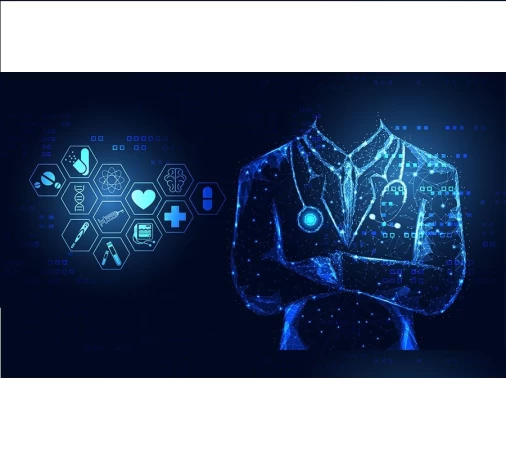
Before the advent of technologies like the Internet of Things and telehealth, doctor-patient interactions were limited to direct consulting or the occasional text messages. However, doctors and caregivers could not provide comprehensive patient monitoring services beyond the scope of the hospital or the clinic. Although the concept of telemedicine and remote monitoring devices has been around for a few years, the technologies promoting their usage have only evolved recently.
The Internet of Things in the healthcare sector has been instrumental in improving doctor-patient communication, remote monitoring of patient’s health, precision in reporting, and preventing cross-infections in hospitals. IoMT has also proved beneficial in improving critical care, emergency response to life-threatening situations and preventive medical management.
Let’s look at some statistics to get a clearer picture of the impact of the Internet of Things in the healthcare industry. According to AllTheResearch, in 2018, the global IoT market was valued at $44.5 billion, and this figure is predicted to grow $254.2 billion by the year 2026.\
The numbers are looking good for the medical wearable industry, with IoT devices expected to provide an economic boost of $4 – 11 trillion by 2025.
IoT in healthcare is an interconnected infrastructure of medical things – software applications, healthcare systems, and medical devices - that can streamline medical management. These devices and systems can seamlessly gather, generate, collect, transfer and analyze healthcare images, data, reports to healthcare providers across the network through servers or cloud.
According to specific reports, more than half of medical organizations worldwide have either already implemented or are planning on implementing IoT solutions by tying up with any healthcare app development company. The number of patients and doctors relying on IoMT for maintaining and monitoring health is expected to grow exponentially in the coming years.
The Internet of Medical Things can help the healthcare industry deal with some of the problems it has always faced. Such as lack of medication adherence, non-availability of medical facilities in remote locations, lack of preventive medical management, off-clinic patient monitoring and non-availability of skilled professionals.
Some of the benefits of IoMT in healthcare are:
Physicians can make evidence-based treatment decisions that can have a huge impact on the treatment outcome. Interconnected internet of medical things can help bridge the gap between medical needs and available facilities. By monitoring a patient's health condition in real-time, doctors and care providers can make informed and timely decisions based on data collected by the devices. It helps doctors diagnose more accurately by minimizing errors.
Real-time monitoring of conditions can help prevent unnecessary visits to the doctors, hospital stays and tests. Since the patients are connected to their doctors and hospitals through their medical devices, it is easier to assess the criticality of the patients. It helps ensure non-critical patients stay home while providing medical facilities to those who desperately require them.
Since conditions are monitored in real-time, it is easier to assess health conditions and diagnose diseases early before symptoms escalate.
Non-adherence to medication is one of the significant reasons that impact treatment outcomes. Through connected medical devices, it is possible to ascertain if the patient has consumed medicines on time.
Remote monitoring of a patient's health is one of the most common applications ofIoT in healthcare. The connected devices gather sensitive health information about patients such as blood pressure, heartbeat, glucose monitoring, mood management, and more. By transmitting this data to the concerned doctor, IoMT reduces patients’ need to travel to the healthcare facility for treatment.
IoMT is especially useful while treating patients with chronic conditions, elderly patients, and those residing in remote locations. With advanced algorithms built into the medical devices, any deviations from normal readings can trigger alerts prompting doctors and care providers to intervene.
Smart medical devices are ushering in the digital transformation of the healthcare industry. TheInternet of Things in the healthcareindustry can monitor and transmit real-time medical data in ways that weren’t possible until a few years ago. These wearable devices such as heartbeat monitoring watches or pillboxes are helping patients understand their health conditions in better ways. Smart devices are also helping doctors know exact symptoms and deviations in health parameters which can help them devise accurate treatment plans.
The potential of the internet of medical things is immense and far-reaching. Coupled with smartphone technology and advanced applications, every healthcare app development companyis trying to help gather sensitive medical information about patients and track and prevent illnesses.
Nearly 88% of care providers invest in remote patient monitoring technology that can help high-risk patients, manage unstable conditions and offer value-based care. IoT in healthcare can have a significant impact on elderly care. As a person ages, the number of medical conditions also increases. Portable diagnostic devices, wearable devices, medication reminder boxes help reduce the number of in-person visits and hospitalization costs.
Additionally, the healthcare costs will also see a drastic reduction with the increased usage of IoMT. According to Goldman Sachs, IoMT can bring about $300 billion in annual savings in healthcare expenditure.
The Internet of Medical Things has just begun to reshape the healthcare industry. Every healthcare app development company can incorporate innovative technologies to increase the adoption of IoT and smart devices. As IoMT technology is poised firmly for growth, the app development market is looking at different ways to integrate AI, big data analysis and sensor technology into medical management applications.